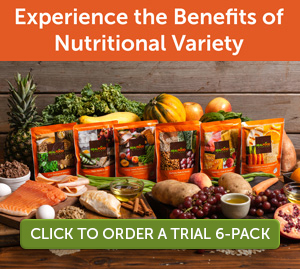By Hilarie Geurink, RD, CSP
If you or your child uses a feeding tube and blends some or all of your meals, traveling can feel extra overwhelming. But with the right planning and a few smart tools, it’s more doable than most people expect.
From packing meals safely to getting through airport security or figuring out how to blend on the go, this guide walks you through the most common challenges.
You’ll also hear from real families who’ve done it, so you can see exactly how others make travel work with a feeding tube and blended diet.
Packing Your Medical and Tube Feeding Supplies
This is probably obvious, but it’s important. Start planning your packing list early. Create a checklist at least a couple weeks before your trip and share it with other caregivers. Some families use shared notes apps, others like to use google docs. This gives you time to notice anything you use daily that didn’t make the list at first.
It’s also important to keep things separate and accessible. Many families like packing cubes or even those over-the-door shoe organizers to keep supplies tidy and easy to find. You’ll also want to store medical supplies in a separate bag, that way it’s easier to find what you need, when you need it.
One last thing to consider when packing is when you get your regular medical supply shipment.
Sometimes that doesn’t line up with your travel schedule. If you’re expecting a shipment after you leave, your DME or care team may be able to adjust the timing or ship to your destination. If not, start setting extras aside as early as possible.
Planning Your Blended Meals Based on Your Trip Length and Style
After you get a good handle on your supplies and are feeling more organized, start to think about your blended meals and how they’ll fit into your travel plans.
There’s no one right way to do it, families find all kinds of creative ways to make it work!
But it’s important to be realistic about what feels doable, and prioritize whatever helps your family enjoy the trip.
Here are some things to consider:
- How long will you be gone?
- Will you be flying, driving, or taking another form of travel?
- Do you want to bring your blender and prep meals during the trip? (And don’t feel guilty if you don’t, most people eat out on vacation for a reason!)
- Will you have access to a kitchen, fridge, or freezer?
- Will you have access to grocery stores or food delivery at your destination?
And to help you start thinking through your plan, here are the options I see families using the most:
Option 1: Blend everything ahead of time
- Pre-portion and freeze meals at home. Pack frozen meals in a cooler with long-lasting ice packs. Bring thawed meals for the travel day.
Option 2: Blend some meals + blend at your destination
- Bring blends for the travel day plus 1–2 more days (so you don’t have to blend right away) and blend fresh once you arrive and are settled.
Option 3: Use commercial blends during travel day, pre-packed homemade blends on arrival
- Bring commercial blends for travel days and pack frozen homemade blends to use when you get there.
Option 4: Use a mix of commercial blends, and blend at destination when able
- Use commercial blends for travel days or when you’re out and about, and homemade blends when you have more time or access to a kitchen.
Option 5: Use only commercial blends for the entire trip
- This is especially helpful when you’re short on time, staying somewhere without a kitchen, or just want to simplify your travel.
- Real Food Blends® is a commercial option made from 100% real food and no synthetic ingredients, and is the closest to homemade blenderized tube feeding compared to other blenderized enteral formulas.
How Real Families Travel with a Blended Diet
Not sure how this might play out in real life? Here’s exactly how some families packed, planned, and made it work:
Example 1). We packed meals and blended fresh once we arrived.
“We normally use mason jars but use the disposable deli soup containers while traveling. Then I blend once we arrive, and re-use the plastic containers until the end of the trip. We pack our high-powered blender in the checked luggage, and also basic measuring supplies, and then always stay somewhere with an in-room kitchen or Airbnb with full kitchen.”
Example 2). We blended everything ahead of time.
“We’ve traveled several times for a week with my daughter. I blend an entire week’s worth of food and separate into individual pouches per meal. I use the Baby Brezza® reusable pouches and freeze them. When we fly, we put them all in a backpack cooler with ice packs and everything stays frozen!”
Example 3). We brought both homemade blends and formula for backup.
“We flew recently with a week’s worth in a cooler bag (all going in frozen as 6 oz portions in breastmilk bags). The food for day was thawed, portioned in 60 mL syringes, and kept in a smaller, soft-sided cooler. I also brought a week’s worth of Real Food Blends® in a carry on just in case. Total travel time was ~ 8-10 hrs. I knew we could get more ice on the plane or before the drive but we didn’t need to. And the flight attendants gave us hot water in a cup to warm up the food for us in the air.”
Example 4). We relied on commercial blends this time.
“Most of the time I make all of my daughter’s food, but on long appointment days or really busy weeks, we use commercial blends that are covered by insurance. She never used to do well on them by themselves, but now that we mix in home blends, she’s totally fine for few days to a week. It made things so much easier. We didn’t have to worry about groceries, prepping food, or being back at a certain time to blend.”
Hopefully these examples help you picture what might work best for your own trip. But just know, there is no one right way. The key is finding a plan that feels manageable for your family.
Final Tube Feeding Travel Tips: What Families Would Want You to Know
After working with many families who travel, I’ve picked up on some of the little things that can make a big difference. These aren’t always in the packing list, but they’re the tips families say they’re so glad they knew beforehand.
- Test your cooler ahead of time.
Pack it with ice packs and meals to see how it holds up. Some coolers sweat more than others, which can be a mess. Find one that doesn’t leak or drip. - Give yourself extra time at the airport and consider TSA Cares.
Security will take longer when you’re traveling with feeding supplies. TSA Cares can sometimes help streamline the process, though experiences vary. It also helps to bring a note from your provider explaining your medical needs and to label your bags as medical supplies. - Bring antiseptic wipes.
They are great for quick cleanups when water isn’t available or public restrooms aren’t ideal. Always follow manufacturer guidelines for cleaning and sanitizing feeding supplies. - Be realistic about portable blenders.
They’re great in theory, but they don’t have the power of a Vitamix® or Blendtec®. You’ll have to stick to soft, simple foods without skins, seeds or tough pieces if you use a portable blender. - Consider pre-ordering groceries for pickup or delivery at your destination.
It saves you from having to navigate an unfamiliar grocery store right after traveling and gives you time to plan exactly what you’ll need for tube feeding meals during your stay. - Look up local support resources before you go.
Take some time to identify the nearest emergency room and hospital at your destination. Additionally, check if there’s an Oley Ambassador near your destination. These are volunteers with firsthand experience who can answer questions and provide assistance. - Some resorts are incredibly accommodating.
Some resorts, such as Disney, are very accommodating. Parks may have baby care stations with microwaves, and some families have even requested a Vitamix® in their hotel room. Restaurants may be able to blend meals if you reach out in advance. - Check out Accessible Adventures.
This is a great resource for family-friendly, accessible travel tips, and destination guides (including a TON of national parks).
Traveling with a feeding tube and blended diet can feel like a lot, especially the first time. But many families find that once they do it, it’s not nearly as complicated as they expected. With a little prep and a flexible mindset, it really can be part of your normal life.
If there’s something you’ve tried that worked really well and I didn’t include it, I’d love to hear about it! You can connect with me on Instagram at @blendedtubefeeding.
Hilarie Geurink is a consultant for Nutricia North America and has been compensated to write this blog post.
Comments are closed.






